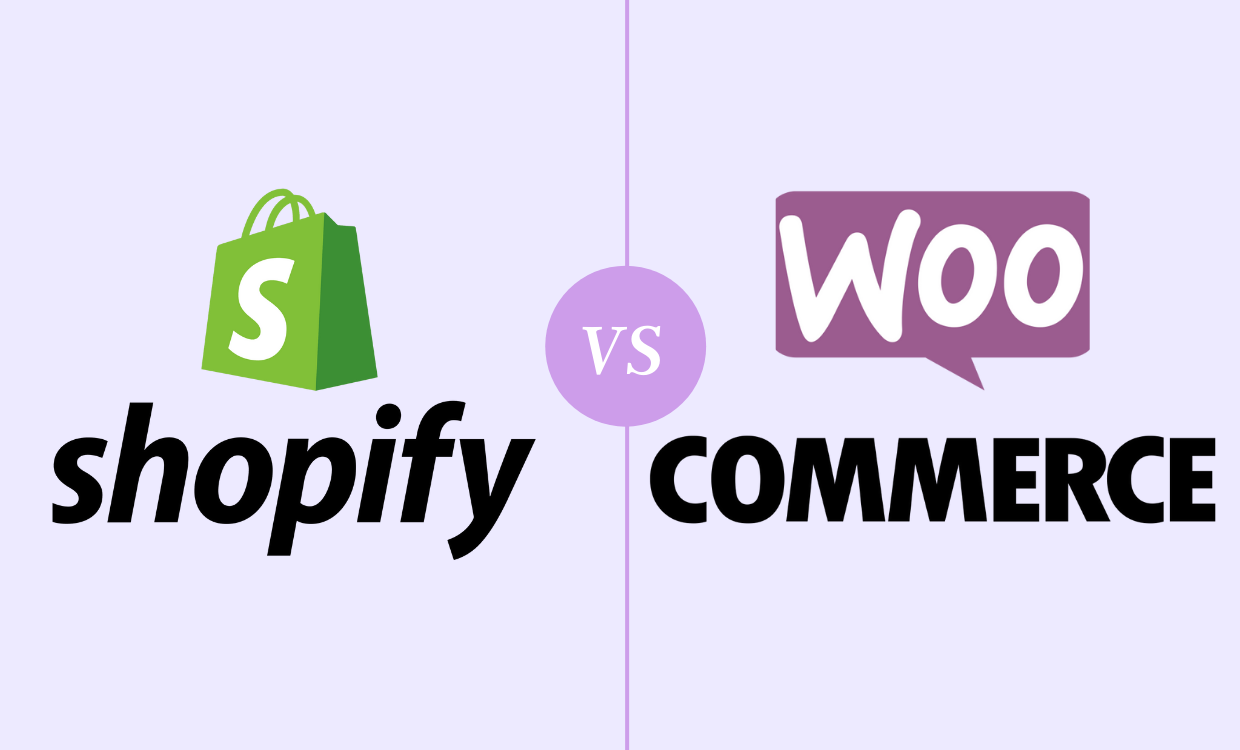Shopify is an easy and reliable platform for e-commerce businesses. It provides monthly paid services to its users. It is very renowned due to its sales and features in the e-commerce market.
On the other hand, WooCommerce is an open-source software. It is a free plugin of WordPress, a popular content management system. The company also claims that it is the largest stakeholder with 40% of the total market share.
Considering the market share of both the e-commerce giants and comparing their plans & features selecting the best platform can be tough for you.
This article will sort out your issue and it will help you select the best among woocommerce vs Shopify for your business.

1. Pricing and Plans
Pricing and plans of both platforms differ in flexibility. Shopify has monthly plans which include extra costs like hosting, Security, and Domain name.
- Shopify Basic– $29/month
- Shopify– $79/month
- Advanced Shopify- $299/month
Upgrading these monthly plans can give you access to more features and services. It also has a 14-day free trial and Bluehost provides a 30-day money-back guarantee if you are not satisfied with the services.
WooCommerce pricing differs because it is an open-source and free platform. You can take a few monthly plans of here which are powered by blue host. Some of them are mentioned here:
- Starter- $13.99/month
- Plus- $17.99/month
- Pro- $31.99/month
But if you don’t want to go with the monthly plans then you only need to pay for the following services
- Hosting- $35 – $50/month
- Security- $0 – $200/year
- Domain- $10 – £20/year
- Extension fees- $0 – $100/month
2. Ease of use
Shopify has won the heart of the customer when it comes to ease of use.
Once you become familiar with the features it becomes very easy to handle them. It is a hosted platform so most of the technical side is handled by the operating Store and you don’t have to do much.
You do not need to worry about backup and security also. But still, if you need more technical assistance hiring a freelance web developer is recommended.
On WooCommerce, it may take longer to set up a website but the steps are really simple and you can take the help of a WooCommerce tutorial. It also has some handy features like auto-install, free SSL certificate, domain name, pre-installed storefront themes, and 24/7 WordPress experts team.
3. Templates & designs
A Strong and attractive user interface is very important to appeal to the visitors of your website. Both platforms offer professional and stylish themes.
In the Shopify theme store, you can get over 70 free and paid themes. You can browse a theme and customize it with the help of a freelance Shopify developer. Usually premium themes on this platform start from $140 and offer numerous options to cater to different industries like food, fashion, sports, etc.
In WooCommerce, there is no shortage of themes. The theme forest has over 1,000 specific e-commerce themes which are suitable for businesses belonging to different industries.
But the look of your template is solely dependent on how much time and effort you put into it. So hiring a freelance web developer is recommended.
4. E-commerce Sales features
Both provides excellent e-commerce sales features to build an effective store. But Shopify clearly wins in this race.
Few features which are present in both WooCommerce and Shopify are Multichannel Selling & Shipping.
Shopify has the following additional features which make it the better choice:
- Abandoned cart recovery
- Discount codes
- Website and blog
- Unlimited products
- +100 payment options
- Multiple currencies are acceptable
WooCommerce also has its advantages when it comes to e-commerce sales features. Some of them are:
- Built-in blogging
- Unrestricted customization
- Single click refund for customers
- Embed products easily
- Checkout facility for a wider range of store pages
5. Plug-ins and add-ons
Adding apps and plugins is easy on both platforms. WooCommerce is an open-source platform so it heavily relies on plugins and it offers more than 50000 options to choose from.
Using the perfect plugins and addons you can develop a powerful e-commerce website on WooCommerce without any limitations.
Shopify apps and plugins are some of the strongest features which make it the most reliable source in the e-commerce market. It offers more than 1200 free and paid apps and plug-ins which can add to your convenience and make a website more powerful.
6. Payment processors & transactions
A convenient payment method is an integral step to build a powerful website. Both the e-commerce service providers offer more than a hundred payment gateways but Shopify is more convenient due to its additional features.
The following payment methods can be accessed on both platforms.
- Stripe
- PayPal
- Credit and debit cards
- Apple Pay
- Square
Shopify payment option usually charges 2% on each transaction but you can reduce the charges by upgrading your plan. Using the own payment option of Shopify you can help get rid of these transaction charges.
WooCommerce does not charge any transaction fee of its own but if you are using a third-party payment gateway transaction charges may apply depending on the payment gateway.
Both are effective e-commerce service provider but unpacking all the differences may help you choose better. Shopify is a very strong and powerful service provider but compared to its competitor it is a bit expensive.
WooCommerce is good for you if you are just starting but if you have a solid plan with a good budget then Shopify is the best option for you.
Meta: WooCommerce vs Shopify have both emerged as powerful and leading e-commerce service providers. Sale features of Shopify are better than WooCommerce.